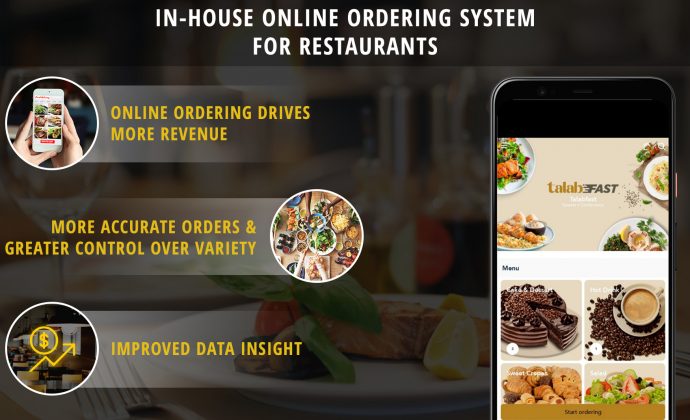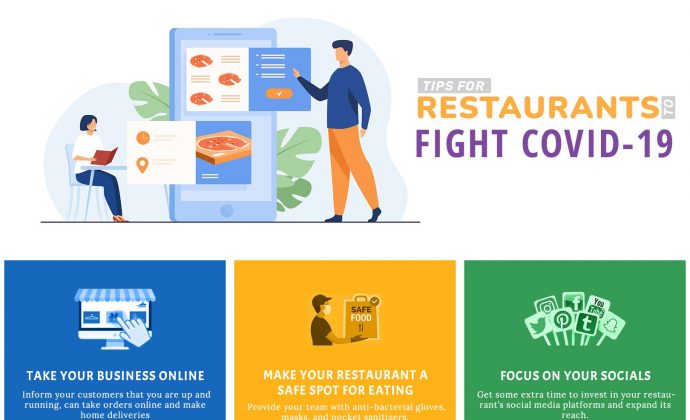Although it may not be the most attractive aspect of running a restaurant, inventory management is essential to maintaining a successful company. Mismanaged expenditures are the main reason why restaurants fail, and managing your inventory is the first step in managing your revenue. Inventory control is an important aspect of restaurant management. Service is kept operating smoothly by managing food inventories properly, but failing to do so might have an impact on finances. What is a restaurant food inventory management system? The process of assessing your food supply, making the most of what you have, and using this knowledge to guide your further purchases is known as restaurant inventory management. Systems for managing restaurant inventory are crucial tools that can help you cut costs and food waste while also increasing earnings. How do restaurants inventory keep their stock levels up? Keeping track of raw and processed items helps restaurants manage their inventories, plan their purchases, understand their food costs, and prevent material waste. While some restaurants continue to use the antiquated pen and paper method, digital techniques have gained popularity. The two most widely used inventory management techniques are: Better known as par inventory sheets, spreadsheets Automatic inventory control The advantages of clever inventory management for restaurants More and more restaurants are using technology to monitor their expenses. A cloud-based inventory management solution can help you save money. You must carefully choose your inventory management system, just as you must take into account a number of aspects when selecting a platform on which to develop a website. Due to the expectation that paying customers will receive the greatest value for their money, inventory management is essential to increase your restaurant’s sales. While selecting an inventory management platform, consider what you want to achieve, and balance the advantages and disadvantages. Here are some of the amazing benefits of good inventory management: Monitoring resources Organized and in control of the stock Supply evaluation Improved forecasting An increase in income and sales Submitting waste and loss reports Labor costs Best strategies for managing restaurant inventory to boost sales and profits Utilize POS software to automate your process. Eliminating the need to hire additional staff to handle inventory management can automate and streamline many of your procedures, using sophisticated restaurant POS software Educate your staff. Teach your workers how to operate the automated system so that anyone can assist if needed and it can be used effectively. Decide on a storage cap. To keep stock fresh and edible, determine the maximum and lowest storage levels for specific products at your restaurant. Provide appropriate access to your data. For each member of your team, you may set up a unique login, limiting their access to the information required for their specific roles. Check the inventory frequently. To avoid interfering with the ongoing process or item usage, try implementing a cycle count into your daily inventory procedure. Track requests for inventory. Set up your procedure so that you get a request each time one of your staff members requests to utilize a specific item. Move the things. If you own a chain of restaurants, think about transferring some unsold inventory to locations where it is used more frequently. Have an extra inventory. Maintain an emergency supply of regularly purchased things, but place a limit on this so the stock doesn’t become out of control. Keep a look out for seasonal or changing menus. According to considerations like changing seasons, change your inventory to reflect the menu offerings. Why use restaurant inventory software? Management of restaurant inventories is a loss-prevention strategy. In other words, you can be losing some of your profit if you’re not completely tracking your food inventory. Knowing what materials arrive at your restaurant, what leaves the kitchen, and what is left over allows you to keep track of your inventory. Profits are reduced when inventory is poorly managed. Having only what is necessary and reducing needless spending and food waste should be your priorities. As a result, this will also support your company’s profit margins. Additionally, you may monitor the stock of goods, such as personalized items, using your inventory software. What characteristics does software for restaurant inventory need? Manage every vendor relationship in one location. Receive continuous inventory updates. Make prompt, accurate financial reporting Items should be moved to fit location needs. Adapt to choices for the warehouse and commissary Common Problems in Restaurant Inventory Management Not Enough Efficiency While it may seem like the simpler solution to maintain your restaurant inventory using Excel sheets and manual registers, you are actually adding to your burden and increasing the likelihood of mistakes. Manual tracking requires a lot of time and decreases productivity. Unmaintained recipes A mismatch of the stock frequently comes from a lack of recipe management. Food and beverage managers typically draw a connection between thefts and stock discrepancies, which are frequently caused by over-portioning or food waste. Untrained Crew Even while automated stock and inventory management systems largely eliminate the need for manual intervention, you still need to have a dedicated and trained workforce for doing routine checks. There should be a group that compares the optimal stock to the whole stock that is available. Zero reporting One of the most important components of keeping a good inventory is tracking and reporting. Overconsumption and waste occur frequently when restaurant inventory records are not closely watched. Lack of Stock Prediction Even the best organizations might experience revenue losses due to inaccurate demand forecasting or a lack of forecasting. Forecasting is vital since you don’t want to either understock the inventory of food and drink goods and run the danger of them going bad or overstock it and run out of supplies to offer your clients. Looking for a company to build inventory management software? At SMB Solution e would be pleased to assist you with our stunning restaurant inventory management system “RestoPOS” if you’ve made the decision to ditch spreadsheets. Ask us anytime if you have any questions about how to… Continue reading Restaurant Food Inventory Management System
Restaurant Food Inventory Management System





